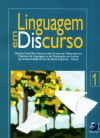Discurso poético e discurso histórico: uma relação intertextual
Palavras-chave:
Vozes da história, Linguagem poética, Fios dialógicosResumo
Resumo: Este trabalho tematiza a estrutura do romance “Desmundo”, de Ana Miranda, a partir de traços presentes, tanto na abordagem pós-moderna do texto literário, quanto na abordagem neobarroca. Mesmo lendo o romance sob o enfoque destes traços, não o rotulo nem de pós-moderno nem de neobarroco, por acreditar que, ao proceder desta forma, estaria limitando por demais minha leitura. Compreendo, então, o texto de Ana Miranda enquanto unidade de linguagem em uso em que se manifestam traços tais como a linguagem intertextual, polifônica e/ou proliferadora. Através da voz de Oribela, personagem-narradora, uma série de discursos atestam, entre outros aspectos, o quanto é possível utilizar uma linguagem poética e, ainda assim, até por isto, deixar falar as vozes da história que, por muito tempo, foram silenciadas.
Abstract: This work focuses the structure of the Ana Miranda’s novel “Desmundo” stemming from conceptions that are both present in the post-modern approach of the literary text, as in the neo-Baroque approach. Despite the fact, I read the novel believing that, when proceeding this way, I would be limiting too much my ouwn reading. Therefore, I understand Ana Miranda’s text as a unity of language in usage in wich certain traces are enhanced, such as, the intertextual language, polyphonic language and/or a language that proliferates. Through the Oribela’s voice, narrator character, series of discourses are brought up to state among other aspects that it is possible to use a poetic language and, nevertheless, even though, to let speak the voices of the story that, for a long time, they were silenced.


